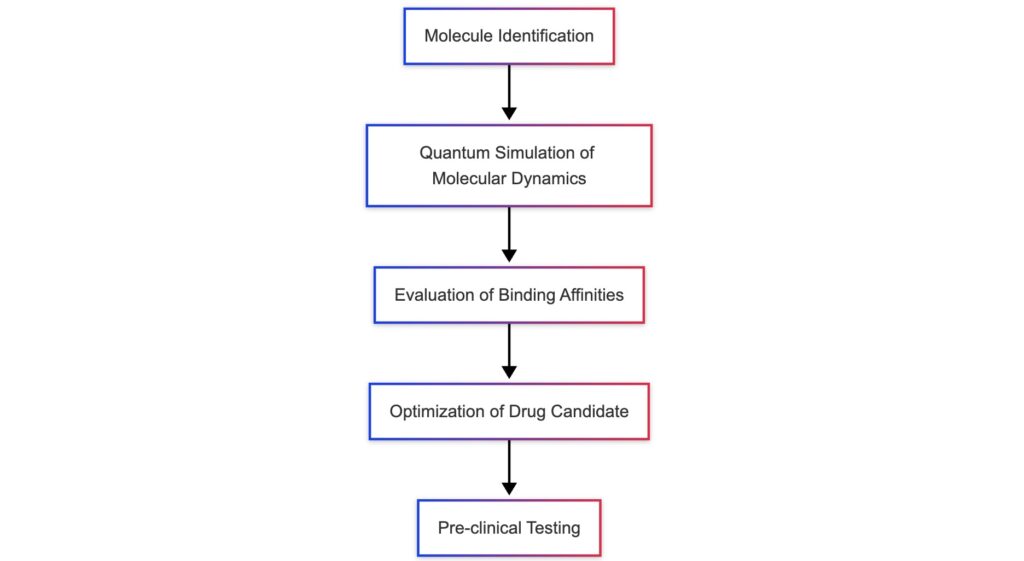3. Quantum Cryptography and Post-Quantum Solutions
While quantum computing is celebrated for its groundbreaking potential, it also poses serious threats to current cryptographic systems. Many of these systems, especially those based on asymmetric algorithms such as RSA and ECC, rely on the difficulty of problems like integer factorization and discrete logarithms—challenges that quantum computers can solve exponentially faster using algorithms such as Shor’s algorithm.
3.1 The Threat to Today’s Cryptographic Infrastructure
The possibility that a quantum computer could break asymmetric encryption within a matter of hours raises significant concerns for national security, industrial espionage, and data integrity. The “harvest now, decrypt later” strategy highlights a real-world threat where cybercriminals collect encrypted data today, betting on the future availability of quantum machines to retroactively decrypt sensitive information. This looming vulnerability compels governments and organizations to urgently adopt quantum-resistant strategies.
3.2 Post-Quantum Cryptography (PQC)
Post-quantum cryptography aims to develop algorithms that are secure against quantum attacks while still being implementable on current classical hardware. Standardization bodies like the National Institute of Standards and Technology (NIST) have led the charge by selecting promising candidates such as:
| Algorithm | Original Name | Primary Application |
|---|---|---|
| ML-KEM | Crystals-Kyber | Key encapsulation for secure internet communication |
| ML-DSA | Crystals-Dilithium | Digital signatures for authenticated document exchange |
| SLH-DSA | Sphincs+ | Stateless digital signatures with smaller public key sizes |
Table 1: NIST-Approved Post-Quantum Cryptographic Algorithms
These algorithms not only protect data against potential quantum decryption but also provide a migration pathway for existing systems. Recognizing the considerable challenge of replacing embedded classical infrastructure, experts recommend a hybrid approach, blending classical techniques with post-quantum methods to ensure double protection during the transition.
3.3 Business and Government Transition Strategies
IBM proposes a three-phase migration program aimed at safeguarding digital assets:
- Phase 1: Prepare cybersecurity teams through risk assessments and training.
- Phase 2: Guide organizational transformation and adopt post-quantum cryptographic standards.
- Phase 3: Implement migration according to risk prioritization and strategic objectives.
This methodical approach highlights the urgency of initiating change while balancing operational continuity. In the meantime, innovative solutions like hybrid cryptographic schemes—combining classical and quantum-resistant algorithms—offer an incremental way to bolster security during the transition period.
4. Quantum Optimization: Opportunities and Current Limitations
Quantum optimization is among the most discussed potential applications of quantum computing. Optimization problems are pervasive in industries such as logistics, finance, and manufacturing, where even minuscule improvements in efficiency can translate to substantial savings. However, current research in quantum optimization remains a field of both considerable promise and notable challenge.
4.1 Promise of Quantum Optimization
Quantum algorithms, such as the Quantum Approximate Optimization Algorithm (QAOA), have shown promise in solving certain optimization problems more efficiently than classical approaches. By exploiting quantum superposition and parallel exploration, these algorithms have the potential to achieve unprecedented improvements in areas like supply chain management, route optimization, and resource allocation. Researchers hypothesize that problems deeply rooted in physical phenomena—where quantum effects naturally occur—may eventually showcase a clear quantum advantage.
4.2 Practical Limitations and Caveats
Despite the theoretical promise, it is widely acknowledged that practical, large-scale quantum optimization remains in its infancy. Many current studies are limited to small problem instances due to the restricted number of qubits and high levels of quantum noise encountered in existing hardware. Furthermore, classical algorithms, which have been refined over decades, still perform competitively on many optimization tasks, thereby challenging the premise that quantum optimization will inevitably outperform its classical counterparts in every application.
4.3 Research Insights and Future Directions
Recent studies indicate that while variational quantum algorithms exhibit potential, their performance is highly sensitive to factors such as circuit depth and error rates. Researchers like Aaronson and França have noted that even with aggressive optimization, the anticipated quantum advantage may be more pronounced in problems that are inherently quantum in nature—such as simulating molecular interactions or quantum materials. Consequently, extensive research efforts continue to investigate whether scaling up quantum hardware can transition theoretical benefits into practical tools for industries worldwide.
Figure 1: Comparative Outlook—Quantum vs. Classical Optimization Strategies
Figure 1: This flowchart illustrates the decision pathways in assessing optimization strategies, highlighting the comparative approach between classical and quantum methods.
5. Quantum Simulation: Bridging Theory and Practical Applications
Quantum simulation leverages the intrinsic properties of quantum systems to model complex physical and chemical processes far more precisely than classical computers can manage. This capability is critical in high-stakes areas like drug discovery, materials science, and chemical reaction modeling.
5.1 Analog vs. Digital Quantum Simulation
Analog quantum simulators use quantum systems that naturally replicate the behavior of other quantum systems. Examples include laser-cooled neutral atoms, which have demonstrated exceptional success in simulating quantum phenomena. Digital quantum simulation, on the other hand, employs gate-based quantum computers to discretize time evolution and simulate many-body interactions. Although digital methods promise universal applicability, they currently face steep challenges such as quantum decoherence and high error rates.
Table 2: Comparison of Analog and Digital Quantum Simulation Approaches
| Aspect | Analog Quantum Simulation | Digital Quantum Simulation |
|---|---|---|
| Hardware Requirements | Lower qubit quality requirements | High fidelity and error correction needed |
| Flexibility of Simulation | Limited to specific quantum systems | Universal simulation of many-body dynamics |
| Current Maturity | Closer to practical applications | Still under intensive research |
| Examples in Use | Cold atom systems, superconducting circuits | Gate-based processors implementing QPE |
Table 2: This table compares the two primary simulation approaches, highlighting key differences in capabilities and challenges.
5.2 Applications in Drug Discovery and Materials Science
Quantum simulation holds transformative potential in drug discovery by enabling researchers to model molecular dynamics at an unprecedented level of detail. For instance, understanding how proteins interact can accelerate the development of new therapeutics, significantly reducing the time and cost associated with bringing a drug to market. In materials science, quantum simulations—especially those based on density functional theory (DFT)—enable better predictions of material properties, fostering the design of advanced materials with superior electrical, mechanical, or thermal characteristics.
5.3 Current Limitations and Future Prospects
The ambitious vision of quantum simulation is tempered by practical limitations. Current quantum computers are restricted in their capacity, often only capable of reliably simulating systems with tens to hundreds of qubits. As a result, while promising for small-scale systems, significant technological advances are required for wide-ranging industrial applications. Nonetheless, with extensive R&D and collaborative efforts across academia and industry, quantum simulation is expected to revolutionize fields that demand high precision in modeling complex quantum interactions.
Figure 2: Quantum Simulation Workflow in Drug Discovery
Figure 2: This flowchart describes the step-by-step pathway from molecule identification to drug candidate optimization using quantum simulation techniques.



 How Mobile Technology Is Transforming Sports Betting Experiences
How Mobile Technology Is Transforming Sports Betting Experiences






